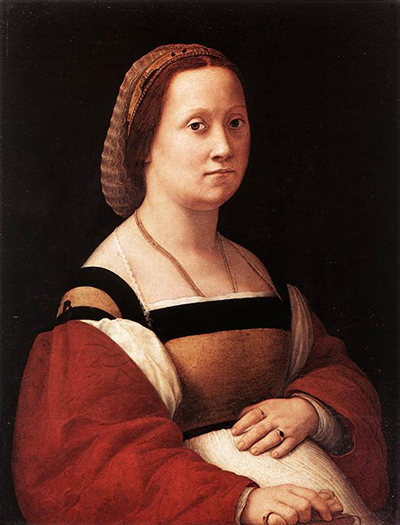The painting of the pregnant woman is also referred to as La gravida which is simply Italian for The Pregnant Woman. This is a great portrait by the well-known Italian High Renaissance artist Raphael.
The painting is an oil on wood portrait. The portrait of the pregnant woman was painted in between 1505 and 1506. This was done during the period that Raphael stayed in Florence, Italy. The painting of the Pregnant woman is in the Palazzo Pitti in Florence at the moment. This portrait portrays a pregnant woman who is sitting and she is resting her left hand on the stomach. During the Renaissance period, paintings of a pregnant woman were very rare and this made the paining very unique. One of the most important aspects of Raphael’s stay in Florentine is the compositional evolution that this painting underwent.
Normally, the Perugino’s compositions just like the one of all Quattrocento masters were painted and on had a linear rhythm. While staying in Florence, Raphael was able to transform his compositional type into a more constructive monumental sense. The transformation that Raphael gave to the composition is more recognizable in the human figures. The Human figures are enclosed harmonically in geometric schemes and in the background, accompanied by a clear daylight.
A very good example of how Raphael had an ability to resolve the natural elements in a more synthetic vision that transcend some specific situations is the amazing portrait of the pregnant woman that is in the Pitti Gallery, Florence. The subject of this painting is a pregnant woman who is aware of her approaching motherhood and she looks toward the spectator very intensely. Her hand is rested on the abdomen. Raphael created a painting that is finely balanced. The solid forms in the painting have been reduced into pure spherical volumes, and they have been overlaid with colours that are well chosen.
It is a very clear indicator that Raphael had a great sense of colours since he shows that in a different portrait Cardinal Fedra Inghirami. As mentioned earlier, there were very few paintings of pregnant women especially during the Renaissance period. Through this painting, Raphael has shown great sensitivity for that special situation of a pregnant woman by depicting both her calm pride and fragility. The left hand that is resting calmly on her stomach emphasizes the swell of the stomach and her gaze strongly rests directly on the spectator.
This great work of Raphael was first mentioned in an inventory of Palazzo Pitti during the early 18th century. At that moment however, it was from an unknown artist. It was then transferred to the Grand Ducal wardrobe of the Uffizi in 1813. It was then returned to Palazzo Pitti where it replaced several works that were robbed by the French. It was attributed to Innocenzo da Imola in 1815 and 1829 it was again listed as by an unknown painter. In 1839, it’s when the painting of the pregnant woman was ascribed to Raphael who is actually the real owner of this amazing painting.




